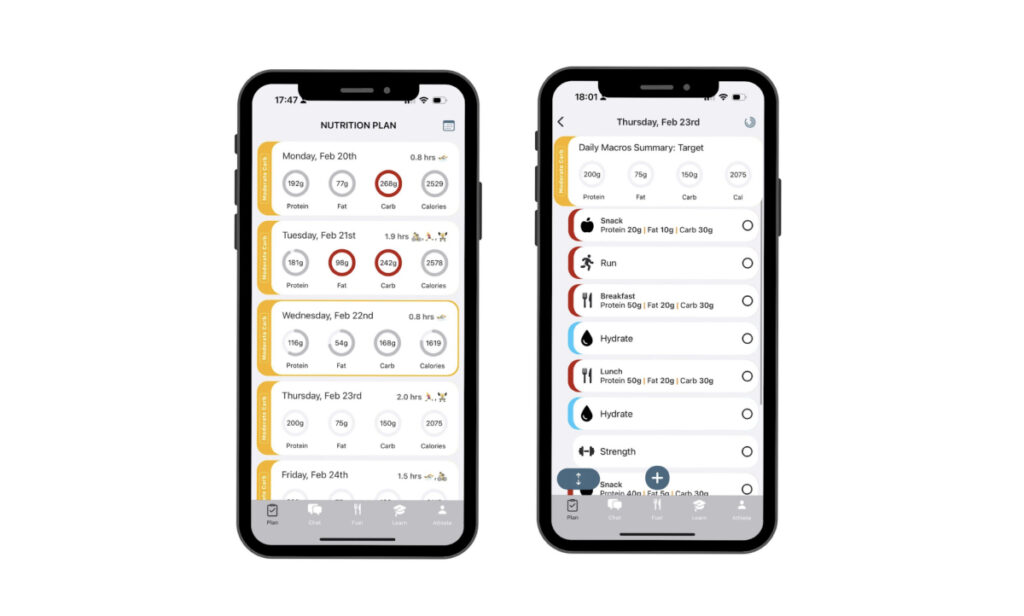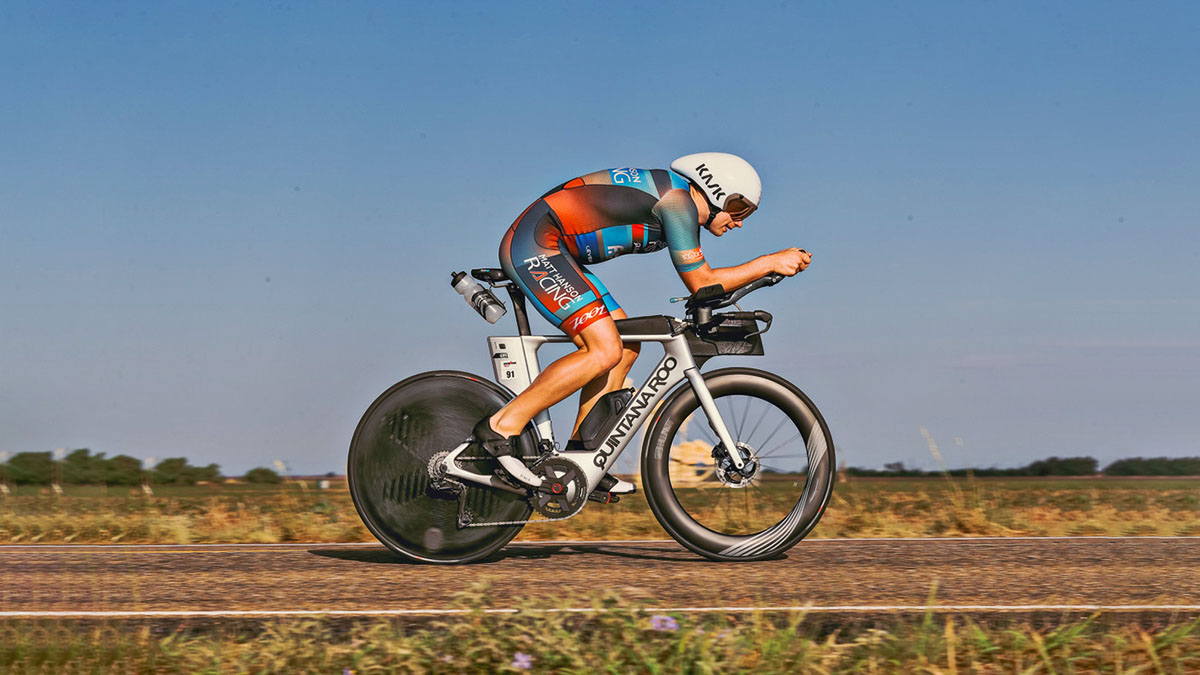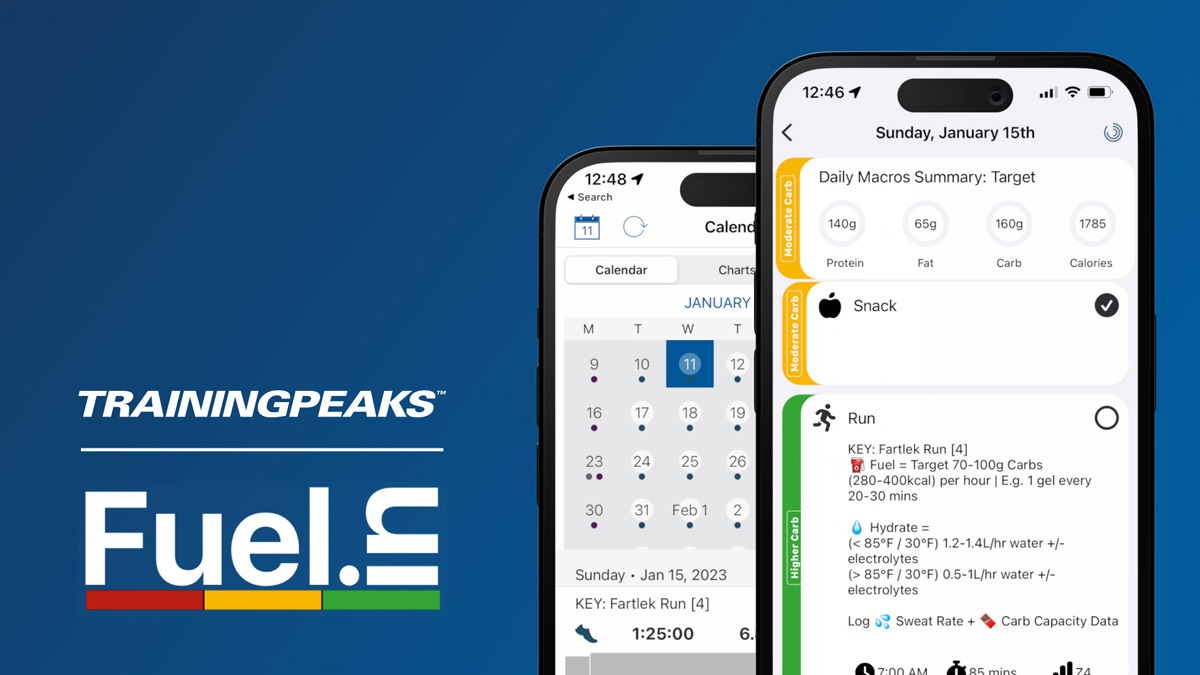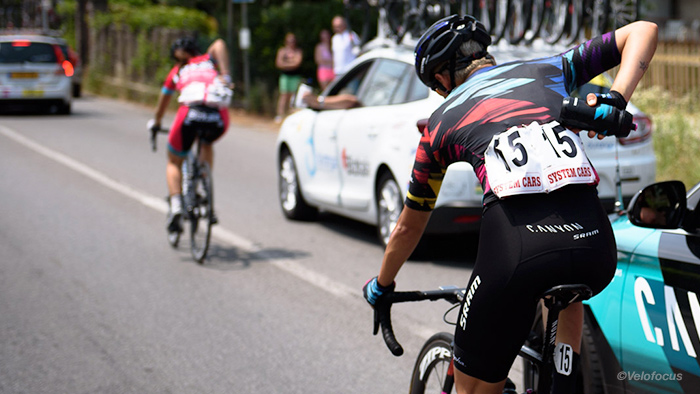The new year sparks new hope in many people, and triathletes are no different. So it was no surprise to have Carter Wehrer — a competitive amateur triathlete and TrainingPeaks employee — reach out to Fuelin to attempt to dial in his nutrition for the forthcoming race season. The following is the first article in a two-part series following the journey of this aspiring age-group triathlete in his quest to improve on all levels of health & fitness, whilst also upskilling in his nutritional knowledge to become a better triathlete and, above all, a better human being.
In this article, we will cover the reasons for using a nutrition service, including personal reasons and objective findings established at the outset of this experiment. We’ll also cover the integration of Fuelin into TrainingPeaks to provide you with the world’s first training based-nutrition system that helps you in optimizing nutrition for better performance.
Investing in Optimizing Your Nutrition for Performance
After a few injuries playing soccer in high school and college, Carter found triathlon in 2016 to remain active. After starting with the simple goal of completing a triathlon, his competitive side took over and he knew he wanted to do more than show up — he wanted to compete.
When asked why Carter wanted to dial in his nutrition, he said, “As I progressed through the sport of triathlon, I have made many connections to help me become a better athlete. I utilize top-of-the-line equipment and have a dedicated triathlon coach, strength coach, PT and massage therapist; yet when it came down to nutrition, I would be self-reliant and do things independently. As a long-course triathlete, nutrition can make or break a race, so it was also time to invest in that area.”
This is not an uncommon scenario. Despite the growing awareness of the importance of nutrition for health and performance, athletes frequently treat it as an afterthought. This afterthought is usually removed after one or two failed attempts at racing despite having the best equipment and training available. Unfortunately, it takes this failure to create the shift, whereas, in reality, these failures need not exist — or certainly not persist — in the first place.
If you are an athlete who has spent a lot of money on the best bikes, running shoes, training plans, and fancy gadgets, yet continually fail to hit the peaks of your potential, then it is time to focus on the not-so-shiny aspect of nutrition. It may not be sexy as the latest gear, yet it can bring changes that will outweigh the cost of any bike tenfold!
Taking a Structured Approach to Nutrition
One element that many athletes and triathletes do very well is structured training. Having a training program delivered by TrainingPeaks is simple and effective. It brings order to an otherwise chaotic world outside of swimming, biking, and running. If you are an athlete preparing for a race, I strongly urge getting a training plan as this will be the structure and direction to your days and weeks in the build. Getting assistance is not a sign of weakness, but rather a sign of confidence and self-assurance that help can be beneficial in achieving your goals.
Your approach to nutrition should be no different from structured training. You can think about your coach as providing structured training and Fuelin providing structured nutrition. The two should not be separate. When combined, you truly have athlete empowerment. Carter makes this point poignantly, “My daily nutrition had no structure to it. Many days would be severely under-fueled, resulting in a carb binge before and after workouts to make up the deficit. Days would end with a continued binge, ultimately impacting sleep patterns because I was lying down wired instead of with a properly fed body.”
A structured nutrition program takes into account many factors, and it is these factors that are usually the root of confusion for athletes when deciding what, how much, and when to eat relative to the volume and intensity of their total training load. In this sense, Fuelin removes the decision paralysis and provides a simple-to-follow structure that can further empower you to make the correct fueling decisions.

Based on the Fuel for the Work Required framework, the Fuelin program utilizes a training-based nutrition approach. A simple traffic light system announces the number of carbohydrates consumed in each meal to the athlete. The specific macros — including protein, fat, and carbohydrates — are also prescribed within each meal to ensure the athlete is hitting their total daily amounts in a structured manner.
By visualizing the day through a simple color scheme (much like TrainingPeaks’ compliance colors), the athlete can effectively plan the correct meals for the entire day and week. The planning can be within the Fuelin app via the extensive meal and ingredient list or third-party macro-tracking apps like MyFitnessPal and LoseIt. Below is a table that outlines the general principles of the traffic light system for day-to-day nutrition.
Carter said, “As someone that has lacked nutrition structure and timing, the stoplight system is a foolproof design. All it takes is a glance to understand when to consume a meal and the macro breakdown.”
Linking Your Nutrition Plan to Your Fitness Goals
“I would like to understand better how to balance meals to fuel myself properly and how the macro breakdown’s overall timing can also assist with fueling workouts,” explained Wehrer.
The basic concept of fueling correctly comes down to several factors. The first is, what are your athletic goals? Are you attempting to improve body composition and lose weight, or do you simply want to produce the best performance possible? This is a fundamental question you should ask yourself, as the result will differ from an energy standpoint. To lose weight, a caloric deficit is required. This is physics. Doing so means intaking less energy than what is being expended. As a result, weight and fat will drop.
However, a caloric deficit can also result in increased fatigue, irritability, lower mood, and inconsistent performance in training, among several other factors. Over a controlled period, this is not necessarily negative, yet should be acknowledged by the athlete and coach to ensure that training prescription and outcomes are accounted for.
Another aspect to consider will be the session intensity and duration. The chart below outlines pre-session fueling considerations, including session type, intensity (indicated as Z1 – Z5 based on RPE of the workout), and duration.

For in-session fueling, there are again several factors to consider. The table below outlines a quick guide to assist the thought process. Generally, in-session fueling is not required for sessions under 60 minutes.
Another point Wehrer made was, “As a lover of sweets, I want to know that it’s okay to consume those items but learn to truly appreciate how I can use the nutrients in those items to fuel me rather than just craving them to the point that I binge eat them.”
The use of sweets, or, in particular, sugar (i.e., glucose, fructose, and sucrose) in training should consider the above-mentioned factors. Higher carbohydrate consumption will occur during race-pace or above-intensity sessions that last at least 80 minutes (as a general guideline). When used appropriately, these carbs should not be viewed as “good” or “bad”. Rather, they are the appropriate fuel source for the work required.
When higher amounts of refined sugar are used in training when levels are over 90g/hr, the likelihood of craving them post-session is reduced. The tendency to reach for a “healthy” salad of leafy greens — potentially combined with whole grains and root vegetables plus a quality source of protein and fats — is increased.
Carter’s Case Study: Establishing Baselines
Food Intake
It was important for Wehrer to understand his starting point before embarking on a three-month journey to improve his health and performance. Wehrer started tracking his daily food intake to identify areas where he may have inconsistencies or require further attention. By having daily macro-nutrient and caloric targets specific to the training program outlined by his coach, Wehrer could identify if total caloric and macro consumption was in line with what is required.
The other advantage of a food diary is revealing the quality of one’s diet and consistent feeding patterns. This can be advantageous to identify areas that require attention and also areas that require encouragement to continue. Specifically to Wehrer, it was immediately clear that his daily protein consumption was far too low and his fat intake was too high.
A less-than-optimal protein intake can result in reduced capacity to recover, an inability to maintain and retain lean muscle mass, potential for suboptimal bone health, and compromised immune system and hormone function. When fat is consumed in excess and the caloric intake is in an overall surplus relative to caloric expenditure, then the capacity to put on body fat is increased.
Additionally, his carbohydrate intake was not structured around his specific training sessions and was erratic in amount and type relative to the sessions being completed. Fuelin set his protein at a moderate-to-high intake of 2.0-2.5g/kg of bodyweight and his fat intake at 0.9-1.2g/kg of bodyweight. The ranges reflect training load for extra calories when required.
Body Composition
The second baseline Wehrer embarked on was a DXA scan to investigate his bone mineral density (BMD) and overall body composition. Triathletes and cyclists can have unusually low BMD compared to age and gender-matched populations. This is due to a significant amount of time spent in non-weight-bearing exercise (i.e., swimming and biking). Assessing bone mineral density can help detect osteopenia and osteoporosis. Early detection and treatment are paramount to a positive outcome should low BMD be present in a younger athlete. In Carter’s case, his BMD was a health T-score of 1.2. A score greater than -1.0 is optimal.
His weight at the time of the DXA was 188 lbs. His overall body composition had a fat estimate of 20%. Body fat percentage is not the most important figure in the DXA results, although most people will be most concerned with it. At 20%, there is room to reduce in a controlled manner. Wehrer felt that reducing fat and overall weight would assist his performance. As previously mentioned, it is important to acknowledge that a caloric deficit is required to reduce body weight and fat mass.
His Android/Gynoid (AG) ratio of 0.99 was above optimal for his gender and age. This ratio between your waist and hip circumference (think of the apple/pear body type analogy) should ideally be below 0.8. While you cannot specifically reduce fat tissue in certain areas (despite what you may read or see on Instagram), with an appropriate caloric deficit and training program, the first place for it to reduce will be the face and trunk. So, if training and nutrition are on point, an athlete will see improvements in the waist region pretty quickly. Additionally, his Fat Mass Index of 5.23 (fat mass/m2) was just inside optimal. This Fat Mass Index (FMI) index is related to the general population. It provides an indication of relative risk from diseases such as heart disease, metabolic syndrome, and cancers.
It’s important to note that the AG ratio and FMI are much better health markers than the percentage of body fat. The risk of non-communicable diseases such as cardiovascular disease, diabetes, and cancer is reduced when these markers are optimized. Wehrer’s Lean Mass Index of 20.3 (lean mass/m2) is optimal for his gender and age. Above 20.3 for his age bracket is ideal. This figure indicates that his lean muscle mass is optimized for health and athletic ability.
Blood Markers
The final aspect that Wehrer sought to establish baselines for was his blood markers. He had one previous blood work test (in December 2021) to compare his most recent data set taken in February 2023. Fuelin provided the blood marker panel to request. Included in this panel were markers related to health and performance — notable mentions are vitamin D3, full iron panel, HbA1c, full blood count, and red blood cell magnesium, to name a few. Fuelin utilizes Inside Tracker to help athletes visualize the data in a no-fuss, graphical manner.
Fuelin has found that the graphical representation assists athletes in understanding their insufficiencies and deficiencies better than numbers alone. If old blood test data is available to the athlete, the “Upload Results” feature is an excellent way to compare the new with the old. Fuelin encourages its athletes to utilize this feature and has found it invaluable to track trends over time. In terms of using Inside Tracker, it is recommended by Fuelin to use the desktop version. A greater visual understanding is achieved this way. Setting the filter to “At Risk” allows an athlete and clinician to dive into what requires immediate attention.
Vitamin D
The first immediate area requiring attention in Carter’s case was his Vitamin D levels. Both data points spread over one year indicated that Wehrer is insufficient and borderline deficient. A <30ng/mL level is associated with an increased risk of stress fractures, reductions in strength, increased incidence of musculoskeletal injuries, and increased risk of COVID-19 infection. Thankfully, Wehrer has excellent BMD, so his likelihood of a stress fracture is reduced, yet not eliminated. With Fuelin, he has now been recommended an intake of 10000iu/day of Vitamin D3 (Monday to Friday) in combination with 150mcg/day of Vitamin K2 (Monday to Friday) for the next eight to twelve weeks before his next blood test.
Cholesterol
The second set of markers that could benefit from improved nutrition intake is his lipid markers. His LDL cholesterol and triglycerides were borderline elevated at 105mg/dL (up from 90mg/dL last test) and 86mg/dL (down from 108mg/dL). His cholesterol ratio is currently at 3.6, which is on the cusp of being borderline high. His HDL cholesterol was on the lower side at 48 mg/dL (steady from his last test).
Reducing saturated fats such as red meat and coconut oils can assist in reducing LDL levels, although genetics can play a role in elevated levels. Replacing with monounsaturated oils such as olive oil, avocado, and avocado oil was recommended to Wehrer. Adding one teaspoon of ground flaxseed to overnight oatmeal or rolled oats and consuming these at least three-to-four times per week for breakfast was also recommended due to the positive impact oats and flax can have on HDL and LDL levels. One-to-two tablespoons of chia seeds were recommended in his overnight protein oats. This will bump up total fiber intake each day and, more importantly, over each week and month.
An important feature of the Fuelin program is having athletes increase their consumption of fruits and vegetables to a minimum of six servings per day. This is to increase total fiber intake along with micro nutritional intake. On the positive side, Wehrer had excellent ferritin, hemoglobin, and transferrin saturation numbers. These are important to assess for any endurance athlete, male or female, to avoid iron deficiency, iron deficiency non-anemia, or iron deficiency anemia. Unfortunately, iron deficiency has been observed in a moderate subset of Fuelin athletes when they first join the program. This observation is supported by research highlighting that 11% of males and up to 35% of females in athletic populations are impacted by low iron stores.
Omega Index
One test that is not currently reported in Inside Tracker is the Omega Index. This is a risk factor and the assessment of your omega-3 status. This is one test that is very actionable in terms of dietary intervention, either through fish or omega-3 supplementation. For most athletes in the USA, they will find their numbers to be far from the optimal 8% – 12% range, which is proposed as the optimal range to reduce the risk of cardiovascular disease and cognitive decline. In Wehrer’s case, his Omega Index was 5.05% and his Omega-6:Omega-3 ratio was 8.0:1.0. The ideal ratio for that marker is 3.0:1.0. Subsequently, we instructed him to include one serving of small, oily fish — such as sardines, herring, mackerel, or, if need be, salmon — per day. Otherwise, he was instructed to take a 3000-4000EPA:DHA omega-3 supplement. This will be re-assessed in 8-12 weeks’ time.
Integrating TrainingPeaks With Fuelin
To start a structured nutrition plan, there are a couple of simple steps to get set up. The first is connecting TrainingPeaks to Fuelin. “Between the onboarding emails, the help articles and videos, integrating the app with other partners such as TrainingPeaks, MyFitnessPal, and Apple Health was a straightforward process,” said Wehrer.
The second step is to ensure that the workout details are correctly updated in TrainingPeaks. To maximize the accuracy of your nutrition and fueling plan, you’ll need to update your workout start time, planned workout duration, and add the overall workout intensity (on an RPE scale of 1-5) to your session title.
For example, if you have an upcoming swim workout on TrainingPeaks that you expect to have a Rating of Perceived Exertion of 3, you’d add [Z3] into the workout title. This signals to Fuelin the intensity of your upcoming workout, which allows the app to seamlessly provide a nutrition plan based on the intensity of your workouts.
Next Steps for Carter
For Wehrer, the next three months will involve dialing in his training and nutrition to align with his goals. He can track his nutrition, training, and all performance aspects using TrainingPeaks. Next up: the second part of this series will review his repeat DXA and blood work. It will highlight his progression with carbohydrate capacity and how to establish a precise hydration plan for racing. We will also review some power tests that have been completed and compared to the previous year’s data. The combination of these will prepare him for his next race at Ironman 70.3 Gulf Coast. In the meantime, Carter has some work to do.
References
Impey, S.G. et al. (2018, February 16). Fuel for the Work Required: A Theoretical Framework for Carbohydrate Periodization and the Glycogen Threshold Hypothesis. Retrieved from https://www.ncbi.nlm.nih.gov/pmc/articles/PMC5889771/








